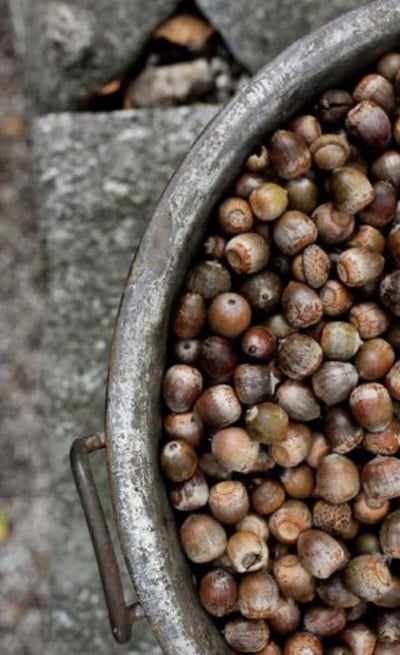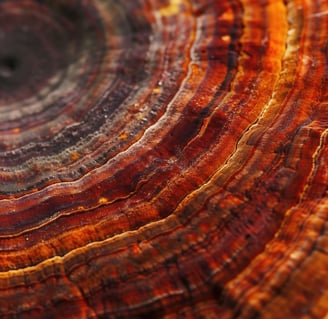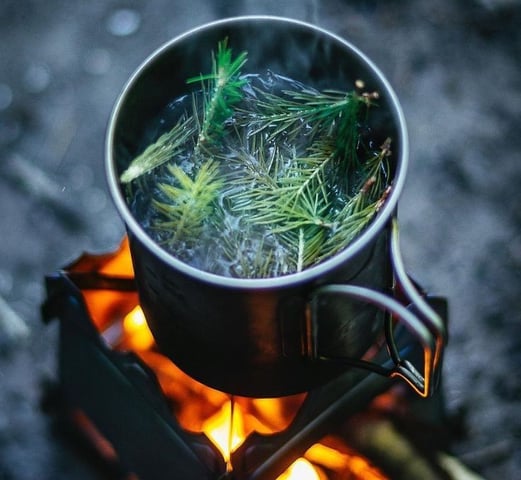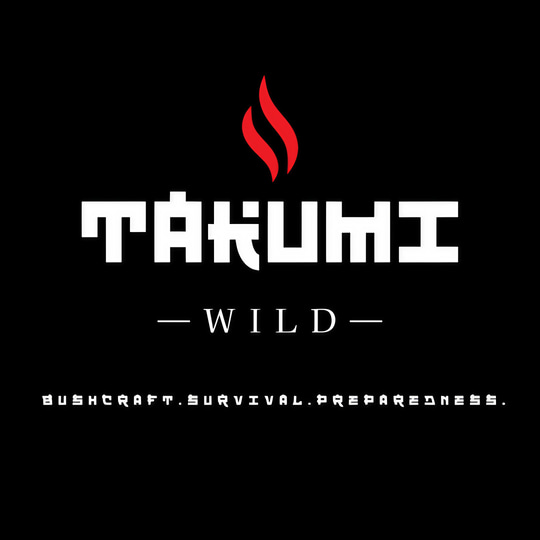“WHEN COMFORT DIES, THE PREPARED REMAIN. NO GODS. NO MERCY. JUST FIRE, BLADE, AND WILL.”
HOW SAMURAI FAMINE SURVIVAL TACTICS CAN PREP YOU FOR FOOD SHORTAGES
This isn’t just about historical curiosity—it’s about actionable survival strategies. Because if a 17th-century swordsman could survive on tree bark and acorns, so can you.
JACK BLACK
6/26/20257 min read


How Samurai Famine Survival Tactics Can Prep You for Food Shortages
"When the rice runs out, the warrior does not complain—he adapts." — Hagakure
Picture this: It's the third week of a supply chain collapse. The grocery stores have been picked clean, your stockpile is dwindling, and the neighbours are starting to eye your vegetable garden with a little too much interest. What now?
Modern preppers stockpile freeze-dried meals and MREs, but what happens when your stockpile runs out or gets stolen? Enter the samurai—feudal Japan's warrior class who routinely faced war, siege, and crop failures yet survived through ingenuity, discipline, and a willingness to eat things that would make a modern foodie faint.
These weren't just warriors—they were master adapters. When rice harvests failed, they turned to the forest. When enemies burned their stores, they knew which tree barks could keep them alive. Their survival strategies weren't about luxury; they were about lasting one more day.
This isn’t just about historical curiosity—it’s about actionable survival strategies. Because if a 17th-century swordsman could survive on tree bark and acorns, so can you.
The Samurai Mindset: Hunger as Training
Samurai approached food scarcity differently than we do today. To them, hunger wasn't just a problem—it was training. Their bushido code emphasized:
Gaman (忍耐) – Enduring hardship without complaint. A true warrior could function at peak performance even when hungry.
Kansha (感謝) – Gratitude for whatever food was available, even if it was just thin gruel or foraged weeds.
Shikata ga nai (仕方がない) – "It cannot be helped." This wasn't resignation; it was pragmatic acceptance followed by action.
Modern Take:
"Your first survival skill isn’t foraging—it’s mental resilience. No amount of gear helps if you panic when hunger hits. The samurai trained their minds first, bodies second."
Historical Example:
During the Siege of Osaka (1615), trapped samurai reportedly ate leather armour straps after boiling them for hours. When even that ran out, they drank muddy water from moats. Yet they fought on—because starvation was just another enemy to outlast.
Samurai Famine Foods (And How to Eat Them Today)
A. Warabi (Bracken Fern)
What they did: Young fern fronds were boiled twice (first water discarded) to remove carcinogenic compounds.
Why it worked: High in starch, available in spring when other foods were scarce.
Modern version: Still eaten in Japan as warabi mochi (a jelly-like dessert). You can find similar fiddlehead ferns in North American forests.
Warning:
Improper prep = stomach cramps or worse. Always boil twice and research local varieties!
B. Donguri (Acorns)
What they did:
Collected acorns in autumn.
Shelled and soaked them in ash water (lye) for days to remove bitter tannins.
Ground into flour for flatbreads or porridge.
Why it worked:
A single oak tree can produce thousands of calories in acorns.
White oak acorns (lower tannins) were preferred over red oak.
Modern version:
Use a cold water leaching method (change water daily for 3-5 days).
Bake acorn flour into dense, nutty bread.
Pro Tip:
Acorns were so vital that some samurai clans protected oak groves as strategic resources.
C. Ukera (Inner Pine Bark)
What they did:
Harvested inner cambium layer in spring.
Boiled, pounded, and mixed with other flours.
Why it worked:
Provided emergency carbs during the "hungry months" before harvest.
The Sámi people of Scandinavia used similar techniques.
Taste Test:
Like woody cardboard. But alive > gourmet.
D. Sansai (Mountain Vegetables)
Samurai foraged over 150 edible wild plants, including:
Udo (Aralia cordata) – Peppery shoots eaten raw or boiled.
Fuki (Butterbur) – Stalks peeled and cooked like celery.
Tara no me (Angelica shoots) – A spring delicacy.
Modern Foraging Rules:
Positive ID or die – Use apps like PictureThis + cross-reference with field guides.
The Universal Edibility Test – Even samurai tested new plants cautiously.
Sustainable harvesting – Never take more than 1/3 of a patch.
Samurai Food Preservation (No Fridge Needed)
A. Nukazuke (Fermented Rice Bran Pickling)
How it worked:
Vegetables buried in live-culture rice bran beds.
Lactic acid bacteria preserved food for months.
Modern hack:
DIY with rice bran, salt, and koji spores.
Ferments in 1-3 days (vs. weeks for sauerkraut).
B. Himono (Wind-Dried Fish)
Samurai method:
Fish salted and dried in coastal breezes.
Lasted months without refrigeration.
Modern version:
Make jerky with salt + solar dehydrator.
Add smoked fish to your stockpile.
C. Miso & Soy Sauce (Fermented Protein Power)
Why it mattered:
Provided complete proteins during rice shortages.
Probiotics prevented dysentery.
Survival lesson:
A single barrel of miso could feed a family for years.
Modern Applications: Build a Samurai-Inspired Survival Pantry
Samurai Method Modern Equivalent Why It Matters
Foraged acorns Stored nuts/seeds High-calorie wildbackup Bark flour Wheat alternatives ) Gluten free/shelf-stable Fermented pickles Home-canned veggies Gut health +preservation Dried fish/meat Freeze-dried proteins Long-term protein Pine needle tea Vitamin C stockpile Scurvy prevention
Key Principle: Diversify. One crop fails? Shift to another.
Training Like a Samurai: 3 Drills to Prep for Scarcity
1. The 3-Day Wild Food Challenge
Rules:
Eat only what you forage/grow.
No grocery stores.
Lesson:
Forces you to learn plants urgently.
2. The Bark Bread Experiment
Task:
Process acorns or pine bark into edible food.
Reality Check:
You'll appreciate every calorie afterward.
3. Fermentation Fridays
Goal:
Make one fermented food per week (kimchi, miso, sauerkraut).
Skill gained:
Preserve food without electricity.
Will You Eat Like a Starving Samurai?
History proves that famine is inevitable—but starvation isn’t. The samurai survived through:
Knowledge (What’s edible)
Skill (How to prepare it)
Mindset (Hunger is temporary; quitting is permanent)
Your Action Steps:
Learn 3 wild edibles in your area this month.
Try one fermentation project next weekend.
Practice a 24-hour fast (samurai-style mental training).
"The warrior does not fear hunger. He fears only weakness." — Bushido maxim
When the rice paddies lay barren under the unrelenting sun of 1732, the samurai of Kyushu did what their bushido code demanded—they adapted while others perished. The Great Kyoho Famine would claim nearly a million lives, but those warriors who survived did so through methods modern preppers have largely forgotten. Their approach to food scarcity wasn't merely about sustenance, but about transforming deprivation into a spiritual discipline—one that offers startling insights for our age of climate instability and supply chain fragility.
The starving samurai's first weapon was his mind. Where peasants panicked when the rice shipments ceased, the warrior class drew upon their Zen training to practice mushin—"no-mind"—the state of detached acceptance that allowed them to make rational decisions while hungry. Historical accounts describe samurai meditating on empty stomachs to master the body's hunger signals, a technique modern science confirms can lower metabolic demand by up to 20%. The Hagakure records Lord Nabeshima's retainers deliberately fasting for days before battles to acclimate themselves to deprivation, creating what nutritionists now call "metabolic flexibility."
Their botanical knowledge put modern foraging guides to shame. Every samurai child learned to identify warabi (bracken fern), not just as food but as strategic resource. The young fiddleheads were harvested in precise lunar cycles when their carcinogenic compounds were lowest, then processed through an elaborate detoxification ritual involving multiple boilings and ash-water soaks. Contemporary research has validated this ancient wisdom—studies show the traditional preparation reduces ptaquiloside toxins by 98%, a fact unknown to Western foragers who sometimes poison themselves with improperly prepared ferns.
Acorns (donguri) became the samurai's secret survival staple. While peasants merely ground them into bitter flour, warrior clans developed sophisticated leaching techniques using specific mineral-rich ashes. The Satsuma domain's records reveal they preferred white oak acorns collected after the first frost, when tannin levels dropped naturally. By storing them in woven cedar baskets submerged in flowing streams, they created primitive but effective cold-water leaching systems that modern survivalists have rediscovered—the running water method removes tannins three times faster than static soaking.
The true test of bushido came when even acorns ran out. This was when samurai turned to ukera—the inner bark of pine trees. The Kōyō Gunkan military manual describes warriors scraping the cambium layer in spring when sugars were highest, then pounding it into a fibrous dough mixed with wild garlic. Modern analysis shows this emergency food provided 650 calories per kilogram—enough to sustain life when all else failed. Scandinavian survival experts recently confirmed that properly harvested pine bark contains surprising levels of vitamin C and resveratrol, making it both sustenance and medicine.
Their preservation methods bordered on alchemy. Samurai households maintained nukadoko fermentation beds—wooden tubs of rice bran cultivated with symbiotic microbes that could transform scraps into probiotic-rich pickles. A well-tended bed could sustain a family for generations; the Date clan's records mention a starter culture that survived for 107 years. Scientists now recognize these live cultures as containing Bacillus subtilis, a bacteria shown to enhance gut health during famine conditions.
Perhaps most revolutionary was their strategic approach to food security. Daimyo like Tokugawa Yoshimune established "famine gardens" where inedible ornamentals were replaced with drought-resistant crops like sweet potatoes and taro. Warrior-scholars wrote agricultural manuals (nōsho) detailing crop rotation systems that boosted yields by 40% over European methods of the same period. The Kumamoto domain maintained secret mountain seed vaults—cliffside caves where heirloom varieties were preserved in ceramic jars, a practice now echoed in Norway's Svalbard Global Seed Vault.
For modern preppers, the samurai's greatest lesson isn't in specific techniques but in their philosophical framework. They viewed food scarcity not as an aberration but as inevitable—and thus prepared for it as thoroughly as they did for battle. Their shokuryō senryaku (food strategies) combined:
Cognitive preparation through controlled fasting
Botanical mastery beyond simple foraging
Microbial husbandry of fermentation cultures
Strategic redundancy in food sources
When supermarket shelves empty today, we panic. When the rice failed, samurai simply shifted to their fifteenth contingency plan. They understood what we've forgotten—that true resilience lies not in stockpiling, but in cultivating an unbreakable dialogue with nature's rhythms. Their famine survival wasn't mere subsistence; it was bushido applied to the art of staying alive.
The test comes not when you have a year's supply of freeze-dried meals, but when you've eaten the last acorn and must choose between pine bark and dignity. In that moment, the way of the starving samurai becomes clear: survival is the ultimate martial art, and hunger the final sensei. Their legacy teaches us that famine isn't just endured—it's studied, respected, and ultimately, mastered.
Up Next: "Ninja Water-Finding Techniques for When the Taps Run Dry" (Because thirst kills faster than hunger.)






enquiries@takumiwild.com
© 2025. All rights reserved.
